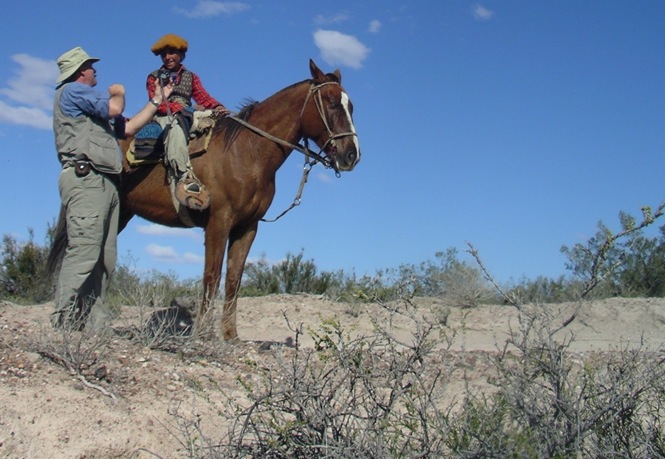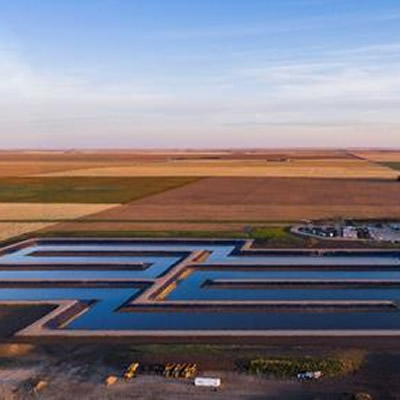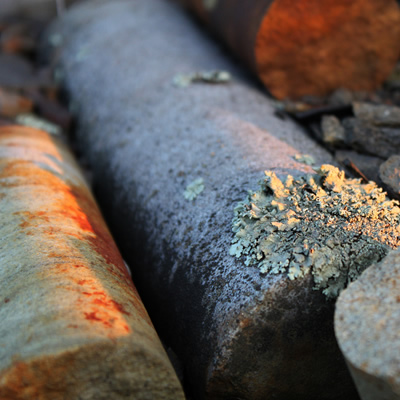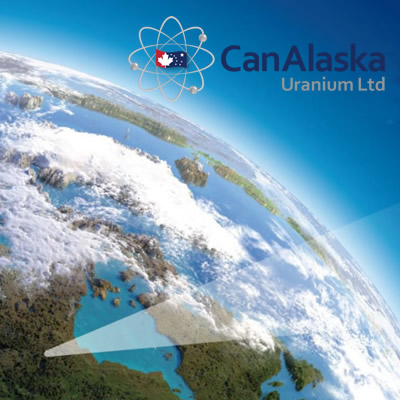Uranium on the cranium
A Cameco Corporation geoscientist has spent decades investigating uranium and gold anomalies in Saskatchewan and beyond

David Thomas speaks with a young boy while on a mineral exploration trip to Argentina. — Photo courtesy David Thomas
Cameco Corporation is one of the largest uranium mining companies in the world, and leading the company’s hunt for further uranium mining opportunities is David Thomas.
Thomas has been with Cameco for the last 16 years and worked on numerous gold and uranium projects inside Saskatchewan and beyond Canada. He is currently the director of the new business group, which means he scours the globe looking for exploration projects of interest to the company.
“It could be the spectrum of early-stage prospector-driven opportunities to advanced-stage acquisitions,” Thomas said.
Getting schooled
Thomas first got a taste of the resource exploration industry in high school when he saw a film presented by a Calgary oil geologist at a career fair.
“(The film showed) a bunch of geologists off hiking and working in the mountains along the Mackenzie River and they were living in tent camps and flying out in helicopters,” Thomas said. “It all looked pretty exotic for a young kid and I thought ‘Geez, that looks pretty cool.’ ”
With the fire lit inside him, he went off to the University of Regina (U of R), where he studied until completing his master's degree in geology.
“The U of R, at that time, was a relatively small university but it was blessed with some really dynamic teachers and professors in the geology department,” Thomas said. “They really had that knack for instilling a passion for geology . . . in the students.”
Career moves
Thomas started his exploration career with the Saskatchewan Geological Survey (SGS), working as a resident geologist for the Athabasca Mining District. During that time, he was responsible for the daily operation of the district office—based out of Uranium City—and undertook mapping projects in the area.
He moved on in 1984 to become a project geologist for the precambrian and mineral deposits group, mapping and evaluating projects in northern Saskatchewan, with an emphasis on studies in the La Ronge gold belt and Flin Flon areas.
Thomas later topped out as provincial co-ordinator for the SGS in 1991, bringing stakeholders together to set up research projects and decipher geological data.
“I interacted a lot with mining companies, exploration companies—both majors and juniors—and interacted a lot with various industry people,” Thomas said. “So I was quite aware of what the exploration industry was doing, particularly in Saskatchewan.”
Cameco calls
Thomas joined Cameco in 1994, working as a geoscientist on company properties and projects in North America, South America and Asia.
He cites working on the McArthur River uranium mine as one of his favourite projects in his career, where he studied the Zone 2 ore body. Analyzing the Kumtor ore body at another Cameco property in Kyrgystan is another favourite project of Thomas’s, as it gave him the chance to travel to a different part of the world. It was the challenge of understanding some of the geological issues of both projects—which warranted structural and alteration studies on the ore bodies—that Thomas enjoyed.
“They were fun projects and they were important to Cameco at the time.”
The here and now
Saskatchewan’s mining future looks bright because of the abundance and diversity of all the resources available, according to Thomas. He singles out potash and uranium as two particular assets that keep a high profile in the provincial resource industry.
“The world’s going to need potash for fertilizer; that’s not going to go away,” he said. “And we need energy—therefore, our uranium assets are very important for the future. We also have other commodities and resources, and many of the junior players are out there proving that Saskatchewan has potential in those areas.”




